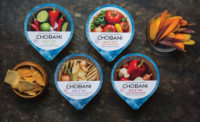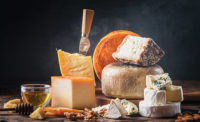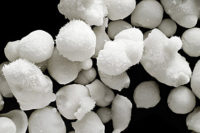As dairy manufacturers face challenges that range from efficiency imperatives to changing consumer tastes, suppliers of cultures and enzymes are creating products to keep the category on target.
“Cultures and enzymes have been instrumental in driving innovation” in dairy, said Dominik Grabinski, a business line manager with DSM Food Specialties, Delft, Netherlands. “Cultures and enzymes have become more specific over the past few years. In particular, the big industry players are trying to find tailored solutions to stay ahead in the race.”
We asked some of those players to discuss the challenges that processors face, and how culture and enzyme technologies help overcome them.
Dairy Foods: Let’s start by taking a state-of-the-sector look at cultures and enzymes. Why are they relevant, how are they evolving, what is shaping their growth?
Grabinski: The cultures and enzymes segment has been growing steadily over the past few years. This growth is driven by three trends. First, there’s demand for greater efficiency in the industry. Dairy processors worldwide are looking to get more dairy products out of the same, or even smaller, amounts of milk.
At the same time, cultures and enzymes have become essential to maintaining the right balance of good bacteria to aid the development of the raw material into great-tasting dairy products. Where 30 years ago milk contained 2 to 3 million natural bacteria per milliliter, nowadays there are only 10 to 15 thousand bacteria per milliliter. While milk production [is] a lot more hygienic, [technological developments] have reduced the capability of the milk to develop its own natural flora. We therefore need to add cultures to rebuild the ability to add texture and flavor to dairy products.
We also see a trend towards healthier dairy products. More consumers are looking for products that are low in fat and natural but still deliver the same taste sensation as the full-fat version. And all this needs to happen at an industrial scale to meet increasing demand.
Dairy Foods: In particular, the need to extract efficiencies from production seems an urgent driver in the dairy industry. How are cultures and enzymes helping processors do this?
Jeff Lambeseder, regional product manager, bioprotection, DuPont Nutrition & Health, New Century, Kan.: By using direct-to-vat culture systems, customers are able to spend less labor time on making bulk starter in their plant while improving the consistency of their processes. And protective cultures have become a key tool in enabling process innovation, improving flexibility in recipes and serving as a tool to maintain high-quality product while reducing waste.
In the end, customers want consistency in performance. They want to see the same acidification, texture and yield from one batch to the next, every day. There are many challenges to achieving this, including milk quality, bacteriophage (which can kill cultures) and a need to optimize costs. Those challenges can vary from customer to customer and even from one customer’s plant to another.
Dairy Foods: Can you give us real-world examples of how cultures and enzymes streamline key aspects of production?
Lambeseder: We’ve worked very closely with a customer to develop a culture and enzyme solution for producing cheese that’s unique to their needs. By greatly improving consistency of acidification and coagulation, we’ve helped our customers reduce variation in moisture and total solids. This can allow them to set their moisture targets closer to the maximum allowed for a cheese type, thereby getting more yield from each vat and improving profitability.
Grabinski: [We have a line that] lets dairy producers make high-quality products from the same amount of milk to mitigate the rising costs of protein and overcome variations in milk quality, resulting in more efficient and sustainable production. These cultures also accelerate fermentation time and time to market while limiting post-acidification until the end of the product’s shelf life to enhance product stability.
Dairy Foods: As always, consumer demand drives trends — and the technologies we invent to address them. What other major trends are you and your teams following?
Lambeseder: Many of today’s market trends are influenced by dairy products from other parts of the world — for example, Greek-style yogurt, kefir, dahi and artisanal cheese types. Producing these types of products often requires a different culture solution than what our customers may have typically used in the past.
Dairy Foods: That’s our cue to begin discussing Greek-style yogurt. What role do cultures and/or enzymes play in producing this thicker, creamier, tarter style of yogurt?
Adria Gennuso-Fuchs, marketing manager, fresh dairy, Chr. Hansen, Milwaukee: Customers often have specific targets and a finished product profile in mind when formulating their Greek yogurt. This profile may consist of a target texture and flavor, both of which are heavily influenced by the culture selected and the process. Customers can face challenges with getting the correct speed of acidification, controlling post acidification in-process and during storage, controlling variation in the process and controlling the signature flavor and texture.
One of the most important attributes of the culture is the pH post acidification. Customers want a culture that has optimal pH stability during processing and over the product’s shelf life to ensure maximum flexibility, stable quality and capacity utilization. For example, particularly in separated Greek yogurt, ideally, the culture should stay between pH 4.6 to 4.4 during separation to achieve efficient separation and a mild flavor profile. We advise our customers about the influence cultures can have on the performance of the separator, which can require adjustments to feed rate, throughput — the nozzle size — and yield.
Mirjana Curic-Bawden, senior scientist, application manager, fermented milk and probiotics, cultures & enzymes, Chr. Hansen: As with any other fermented product, yogurt cultures contribute to taste, flavor, smoothness and mouthfeel. Ultimately, any yogurt culture can be used for production of Greek-style yogurt as long as it contains Streptococcus thermophilus and Lactobacillus bulgaricus. However, because of the process requirements specific to Greek yogurt and consumers’ preferences, certain cultures are more popular.
Dairy Foods: Which ones? And why?
Curic-Bawden: Several years ago, when Greek-style yogurts were just emerging, cultures that were found to be the best fit were selected from the range of yogurt cultures existing at that time. Their main characteristics are that they’re very low in process post-acidification, which is desirable to manage acid development in the yogurt before it’s separated. This is because Greek-style yogurt is made of skim milk, and unlike “normal” yogurt that’s cooled relatively quickly, Greek-style yogurt usually stays at the fermentation temperature before separation. This process can take anywhere from 1.5 to 5 hours, depending on the volume of the incubation tanks and capacity and the number of separators.
The best cultures for Greek yogurt also have well-balanced viscosity. Greek yogurt’s thickness comes from high protein levels, but good viscosity — that is, a certain level of exopolysaccharide (EPS) production — is desirable to provide a smooth appearance and give nonfat yogurt a good mouthfeel. So the ideal culture for Greek-style yogurt will have high viscosity but, at the same time, allow for efficient separation.
And cultures with milder flavors are the most popular, as they go well with both fruit and sweet and indulgent flavors.
Dairy Foods: How have probiotics affected the entire dairy sector, not just cultures and enzymes?
Grabinski: The marketing efforts around the benefits of probiotics had a big impact on the industry. Consumer awareness around the benefits of live cultures significantly improved the reputation of good bacteria in general and boosted sales of dairy products.
Michael Bush, senior vice president, Ganeden Biotech, Mayfield Heights, Ohio: Consumers are more aware of the functional aspects of probiotic cultures and are looking to add them to a wider variety of products. From a finished-product standpoint, we’re looking at a market larger than $30 billion and continuing to grow at a rate that’s outpacing other functional market verticals.
Dairy Foods: Where is this growth coming from, and how is it translating into probiotic innovations?
Bush: Consumers are looking for convenience and product formats that already fit into their lifestyles. CPG companies are looking for probiotic solutions that require minimal changes in manufacturing or packaging processes and that withstand the shelf life of the finished product. Because new probiotic strains require safety and efficacy to work, you aren’t necessarily seeing new strains popping up. But what we are seeing is great, compelling science around a number of well-studied strains.
Dairy Foods: What culture and enzyme innovations do you anticipate will take the category to yet another level of sophistication?
Grabinski: One of the main things we expect to see is even more specialization. The result will be a wider range of cultures with very specific activities, enabling dairy processors to create products that are even creamier and more flavorsome with less milk than currently possible. The culture of the future will also help animals to increase feed conversion into milk or meat in a very natural way to further aid the sustainability efforts of the food industry.
Lambeseder: The use of genomic technology for cultures has allowed us to better understand why they function as they do. A strong focus has been on understanding functionality: selecting, but also producing, to achieve high functionality with high robustness in the application. We see this in increased speed of acidification with direct-vat inoculation cultures, genomic technologies for phage robustness, distinct flavors generated by flavor adjuncts and enhanced protective efficacy.
Bush: We’re excited about shelf-stable probiotics in fortified foods. Now consumers are able to get the probiotic benefits that were once relegated to the yogurt or supplement aisle in products ranging from fluid milk and ice cream to coffee drinks and nutrition bars.
Dairy Foods: I can’t help but wonder if these exciting new advances come with any tradeoffs — say, to finished product quality. Is it all upside here?
Grabinski: A couple of years ago, the tradeoff for using cultures was a less palatable product. However, with today’s technology this is no longer a concern. Specialization has resulted in cultures that can target very specific processes. Combining the right cultures is key.
Dairy Foods: How are you helping customers optimize their use of cultures and enzymes?
Lambeseder: The biggest mistake that we see is when a processor doesn’t realize the importance of — or put enough emphasis on — sanitation when making cultured dairy products. Without proper cleanup and use of bacteriophage-effective sanitizer, the culture systems will eventually be unable to function properly due to infection by bacteriophage. The result can be delayed production, missed specifications — moisture, texture, pH — or, in some cases, lost vats of product. It’s vitally important that customers maintain strong sanitation programs and avoid cutting time or costs on this production step.
Grabinski: Many dairy processors still assume that there is one solution for all their applications. They often forget that there’s a huge amount of science behind these processes. For us as a supplier, it’s therefore important to work closely with customers to find out how specific cultures will interact with different customer applications.
One of the biggest misunderstandings is still the belief that cultures are only able to speed up processes and increase production efficiencies. However, cultures can deliver so much more. They’re able to respond to a wide variety of consumer demands. This is an important consideration, in particular as consumers are looking for specialty products that suit their needs at different times of the day.
For example, for breakfast, they want to have a dairy product that tastes fresh and is rich in protein, whereas around lunchtime, they are more likely to want an indulgent dessert with a creamy texture that’s easy to digest.
Cultures can help processors develop specific taste profiles, indulgent textures and visual appeal. The more specialized the culture or enzyme, the more benefit it will bring to the process.




